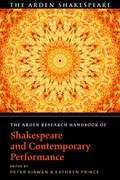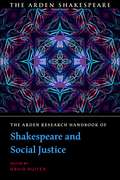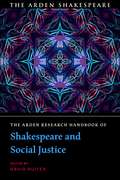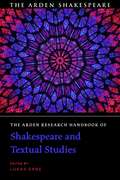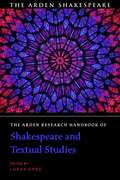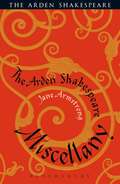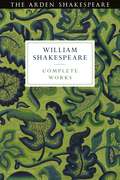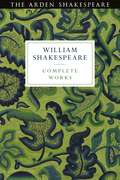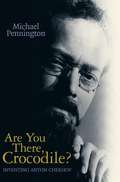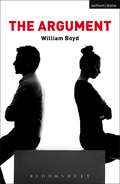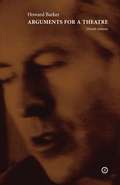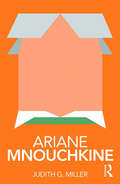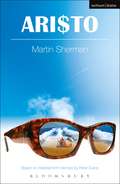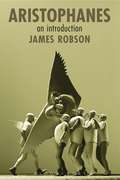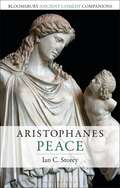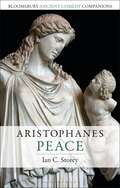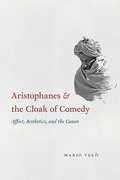- Table View
- List View
The Arden Research Handbook of Shakespeare and Contemporary Performance (The Arden Shakespeare Handbooks)
The Arden Research Handbook of Shakespeare and Contemporary Performance is a wide-ranging, authoritative guide to research on Shakespeare and performance studies by an international team of leading scholars. It contains chapters on the key methods and questions surrounding the performance event, the audience, and the archive – the primary sources on which performance studies draws. It identifies the recurring trends and fruitful lines of inquiry that are generating the most urgent work in the field, but also contextualises these within the histories and methods on which researchers build. A central section of research-focused essays offers case studies of present areas of enquiry, from new approaches to space, bodies and language to work on the technologies of remediation and original practices, from consideration of fandoms and the cultural capital invested in Shakespeare and his contemporaries to political and ethical interventions in performance practice. A distinctive feature of the volume is a curated section focusing on practitioners, in which leading directors, writers, actors, producers, and other theatre professionals comment on Shakespeare in performance and what they see as the key areas, challenges and provocations for researchers to explore.In addition, the Handbook contains various sections that provide non-specialists with practical help: an A-Z of key terms and concepts, a guide to research methods and problems, a chronology of major publications and events, an introduction to resources for study of the field, and a substantial annotated bibliography. The Arden Research Handbook of Shakespeare and Contemporary Performance is a reference work aimed at advanced undergraduate and graduate students as well as scholars and libraries, a guide to beginning or developing research in the field, and an essential companion for all those interested in Shakespeare and performance.
The Arden Research Handbook of Shakespeare and Social Justice (The Arden Shakespeare Handbooks)
by David RuiterThe Arden Research Handbook of Shakespeare and Social Justice is a wide-ranging, authoritative guide to research on Shakespeare and issues of social justice and arts activism by an international team of leading scholars, directors, arts activists, and educators. Across four sections it explores the relevance and responsibility of art to the real world ? to the significant teaching and learning, performance and practice, theory and economies that not only expand the discussion of literature and theatre, but also open the gates of engagement between the life of the mind and lived experience. The collection draws from noted scholars, writers and practitioners from around the globe to assert the power of art to question, disrupt and re-invigorate both the ties that bind and the barriers that divide us.A series of interviews with theatre practitioners and scholars opens the volume, establishing an initial portfolio of areas for research, exploration, and change. In Section 2 'The Practice of Shakespeare and Social Justice' contributors examine Shakespeare's place and possibilities in intervening on issues of race, class, gender and sexuality. Section 3 'The Performance of Shakespeare and Social Justice' traces Shakespeare and social justice in multiple global contexts; engaging productions grounded in the politics of Mexico, India, South Africa, China and aspects of Asian politics broadly, this section illuminates the burgeoning field of global production while keeping as a priority the political structures that make advocacy and resistance possible. The last section on 'Economies of Shakespeare' describes socio-economic and community issues that come to light in Shakespeare, and their potential to catalyse ongoing discussion and change in respect to wealth, distribution, equity, and humanity. An annotated bibliography provides further guidance to those researching the subject.
The Arden Research Handbook of Shakespeare and Social Justice (The Arden Shakespeare Handbooks)
The Arden Research Handbook of Shakespeare and Social Justice is a wide-ranging, authoritative guide to research on Shakespeare and issues of social justice and arts activism by an international team of leading scholars, directors, arts activists, and educators. Across four sections it explores the relevance and responsibility of art to the real world ? to the significant teaching and learning, performance and practice, theory and economies that not only expand the discussion of literature and theatre, but also open the gates of engagement between the life of the mind and lived experience. The collection draws from noted scholars, writers and practitioners from around the globe to assert the power of art to question, disrupt and re-invigorate both the ties that bind and the barriers that divide us.A series of interviews with theatre practitioners and scholars opens the volume, establishing an initial portfolio of areas for research, exploration, and change. In Section 2 'The Practice of Shakespeare and Social Justice' contributors examine Shakespeare's place and possibilities in intervening on issues of race, class, gender and sexuality. Section 3 'The Performance of Shakespeare and Social Justice' traces Shakespeare and social justice in multiple global contexts; engaging productions grounded in the politics of Mexico, India, South Africa, China and aspects of Asian politics broadly, this section illuminates the burgeoning field of global production while keeping as a priority the political structures that make advocacy and resistance possible. The last section on 'Economies of Shakespeare' describes socio-economic and community issues that come to light in Shakespeare, and their potential to catalyse ongoing discussion and change in respect to wealth, distribution, equity, and humanity. An annotated bibliography provides further guidance to those researching the subject.
The Arden Research Handbook of Shakespeare and Textual Studies (The Arden Shakespeare Handbooks)
by Lukas ErneThe Arden Research Handbook of Shakespeare and Textual Studies is a wide-ranging, authoritative guide to research on Shakespeare and textual studies by an international team of leading scholars. It contains chapters on all the major areas of current research, notably the Shakespeare manuscripts; the printed text and paratext in Shakespeare's early playbooks and poetry books; Shakespeare's place in the early modern book trade; Shakespeare's early readers, users, and collectors; the constitution and evolution of the Shakespeare canon from the sixteenth to the twenty-first century; Shakespeare's editors from the eighteenth to the twenty-first century; and the modern editorial reproduction of Shakespeare. The Handbook also devotes separate chapters to new directions and developments in research in the field, specifically in the areas of digital editing and of authorship attribution methodologies. In addition, the Companion contains various sections that provide non-specialists with practical help: an A-Z of key terms and concepts, a guide to research methods and problems, a chronology of major publications and events, an introduction to resources for study of the field, and a substantial annotated bibliography. The Arden Research Handbook of Shakespeare and Textual Studies is a reference work aimed at advanced undergraduate and graduate students as well as scholars and libraries, a guide to beginning or developing research in the field, an essential companion for all those interested in Shakespeare and textual studies.
The Arden Research Handbook of Shakespeare and Textual Studies (The Arden Shakespeare Handbooks)
The Arden Research Handbook of Shakespeare and Textual Studies is a wide-ranging, authoritative guide to research on Shakespeare and textual studies by an international team of leading scholars. It contains chapters on all the major areas of current research, notably the Shakespeare manuscripts; the printed text and paratext in Shakespeare's early playbooks and poetry books; Shakespeare's place in the early modern book trade; Shakespeare's early readers, users, and collectors; the constitution and evolution of the Shakespeare canon from the sixteenth to the twenty-first century; Shakespeare's editors from the eighteenth to the twenty-first century; and the modern editorial reproduction of Shakespeare. The Handbook also devotes separate chapters to new directions and developments in research in the field, specifically in the areas of digital editing and of authorship attribution methodologies. In addition, the Companion contains various sections that provide non-specialists with practical help: an A-Z of key terms and concepts, a guide to research methods and problems, a chronology of major publications and events, an introduction to resources for study of the field, and a substantial annotated bibliography. The Arden Research Handbook of Shakespeare and Textual Studies is a reference work aimed at advanced undergraduate and graduate students as well as scholars and libraries, a guide to beginning or developing research in the field, an essential companion for all those interested in Shakespeare and textual studies.
The Arden Shakespeare Miscellany
by Jane ArmstrongA gem of a reference book covering everything you could possibly want to know about Shakespeare between two handsome covers. Entries are quite short and range from "What did Shakespeare look like?", "Shakespeare on Film" and lists of compliments, oathes, lovers' vows and boys and girls names. There is an entry for each play too, summarising its plot and outlining major characters and themes. Details are given of the debates surrounding Shakespeare's identity, the known and fanciful facts of his life, and descriptions of the theatres in which he worked and the acting companies of which he was a member. A wealth of information and insight, both useful and entertainingly trivial, make this miscellany a book to satisfy students, buffs and bluffers alike.
The Arden Shakespeare Miscellany (Arden Shakespeare Library)
by Jane ArmstrongA gem of a reference book covering everything you could possibly want to know about Shakespeare between two handsome covers. Entries are quite short and range from "What did Shakespeare look like?", "Shakespeare on Film" and lists of compliments, oathes, lovers' vows and boys and girls names. There is an entry for each play too, summarising its plot and outlining major characters and themes. Details are given of the debates surrounding Shakespeare's identity, the known and fanciful facts of his life, and descriptions of the theatres in which he worked and the acting companies of which he was a member. A wealth of information and insight, both useful and entertainingly trivial, make this miscellany a book to satisfy students, buffs and bluffers alike.
Arden Shakespeare Third Series Complete Works (The Arden Shakespeare Third Series)
by Richard Proudfoot, Ann Thompson, David Scott Kastan and H.R. WoudhuysenThis new Complete Works marks the completion of the Arden Shakespeare Third Series and includes the complete plays, poems and sonnets, edited by leading international scholars. New to this edition are the 'apocryphal' plays, part-written by Shakespeare: Double Falsehood, Sir Thomas More and King Edward III. The anthology is unique in giving all three extant texts of Hamlet from Shakespeare's time: the first and second Quarto texts of 1603 and 1604-5, and the first Folio text of 1623.With a simple alphabetical arrangement the Complete Works are easy to navigate, and the reader's understanding and enjoyment are enhanced by the general introduction, short individual introductions to each text, a glossary and a bibliography. This handsome volume is ideal for readers keen to explore Shakespeare's work and for anyone building their literary library.
Arden Shakespeare Third Series Complete Works (The Arden Shakespeare Third Series)
This new Complete Works marks the completion of the Arden Shakespeare Third Series and includes the complete plays, poems and sonnets, edited by leading international scholars. New to this edition are the 'apocryphal' plays, part-written by Shakespeare: Double Falsehood, Sir Thomas More and King Edward III. The anthology is unique in giving all three extant texts of Hamlet from Shakespeare's time: the first and second Quarto texts of 1603 and 1604-5, and the first Folio text of 1623.With a simple alphabetical arrangement the Complete Works are easy to navigate, and the reader's understanding and enjoyment are enhanced by the general introduction, short individual introductions to each text, a glossary and a bibliography. This handsome volume is ideal for readers keen to explore Shakespeare's work and for anyone building their literary library.
Are You There, Crocodile?: Inventing Anton Chekhov (Oberon Modern Playwrights)
by Michael PenningtonMichael Pennington's work on his solo show about Anton Chekhov has taken London's 'Russian Actor' from the Trans-Siberian Railway to Soviet and post-Soviet Moscow, into the repertoires of the National Theatre and the Old Vic and across Europe. Are You There, Crocodile? also includes accounts of his work on Dostoevsky's Crime and Punishment, Tolstoy's Strider and other Russian projects, as well as searching essays on how Chekhov's four masterpieces actually work in the theatre. This book is a study of the great writer, a partial autobiography, and, centrally, an actor's search for identification with the elusive Anton Chekhov himself
The Argument (Modern Plays)
by William BoydThat's why we shout and scream at each other. Clears the air. A kind of truth begins to emerge. We see clearer.Pip and Meredith have had a bust-up. It was only about their opinion of a film, but it's led to more significant differences coming to light. Pip has been having an affair for the past three months with a young colleague at work. Meredith's slate doesn't seem to be entirely clean either.As their families and friends become embroiled in Pip and Meredith's separation, past prejudices, harsh judgements and painful truths come to light. The arguments that ensue go beyond just being about Pip and Meredith, and what they should do about their marriage. In nine taut scenes, William Boyd explores what it is to argue with those we love - and those we should love. He looks at our propensity to judge others and our power to hurt. Alongside this, he shows how it can sometimes be the superficial problems in a relationship that keep it going.Both bleak and funny in its tone, The Argument offers a Strindberg-like take on human dynamics and received its world premiere at Hampstead Theatre Downstairs in March 2016.
The Argument: Together With, The Journal Of The Committee, Answer Of The Governor, Charges, Arguments, And Testimony (Modern Plays)
by William BoydThat's why we shout and scream at each other. Clears the air. A kind of truth begins to emerge. We see clearer.Pip and Meredith have had a bust-up. It was only about their opinion of a film, but it's led to more significant differences coming to light. Pip has been having an affair for the past three months with a young colleague at work. Meredith's slate doesn't seem to be entirely clean either.As their families and friends become embroiled in Pip and Meredith's separation, past prejudices, harsh judgements and painful truths come to light. The arguments that ensue go beyond just being about Pip and Meredith, and what they should do about their marriage. In nine taut scenes, William Boyd explores what it is to argue with those we love - and those we should love. He looks at our propensity to judge others and our power to hurt. Alongside this, he shows how it can sometimes be the superficial problems in a relationship that keep it going.Both bleak and funny in its tone, The Argument offers a Strindberg-like take on human dynamics and received its world premiere at Hampstead Theatre Downstairs in March 2016.
Arguments for a Theatre (4th edition): (4th edition)
by Howard BarkerFor more than three decades Howard Barker has argued passionately against the deformation of English theatre by social realism. Insisting on the primacy of tragedy over all art forms in Western culture, his elaboration of a tragic form for our time – identified by him as The Theatre of Catastrophe – is the theme of this collection of lectures and essays. Barker’s repudiation of entertainment, his insistence on the sterility of debate in theatre, and his conviction that conscience is never an adequate pretext for dramatic action, mark him out as a unique and provocative voice in world theatre.
Ariane Mnouchkine (Routledge Performance Practitioners)
by Judith MillerOver the last forty years, French director Ariane Mnouchkine and her theater collective, Le Théâtre du Soleil, have devised a form of research and creation that is both engaged with contemporary history and committed to reinvigorating theater by focusing on the actor. Now revised and reissued, this volume combines: ● an overview of Mnouchkine’s life, work and theatrical influences ● an exploration of her key ideas on theater and the creative process ● analysis of key productions, including her early and groundbreaking environmental political piece, 1789, and the later Asian-inspired play penned by Hélène Cixous, Drums on the Dam. ● practical exercises, including tips on mask work. As a first step toward critical understanding, and as an initial exploration before going on to further, primary research, Routledge Performance Practitioners offer unbeatable value for today’s student.
Ariane Mnouchkine (Routledge Performance Practitioners)
by Judith MillerOver the last forty years, French director Ariane Mnouchkine and her theater collective, Le Théâtre du Soleil, have devised a form of research and creation that is both engaged with contemporary history and committed to reinvigorating theater by focusing on the actor. Now revised and reissued, this volume combines: ● an overview of Mnouchkine’s life, work and theatrical influences ● an exploration of her key ideas on theater and the creative process ● analysis of key productions, including her early and groundbreaking environmental political piece, 1789, and the later Asian-inspired play penned by Hélène Cixous, Drums on the Dam. ● practical exercises, including tips on mask work. As a first step toward critical understanding, and as an initial exploration before going on to further, primary research, Routledge Performance Practitioners offer unbeatable value for today’s student.
Aristo (Modern Plays)
by Martin ShermanAristo is the new play by Martin Sherman that has its world premiere at the Chichester Festival from 11 September - 11 October prior to a West End transfer. It will star Robert Lindsay and Diana Quick. Based on the last years of the life of the wealthy shipping magnate Aristotle Onassis who after a notorious affair with Maria Calas married Jacqueline Kennedy, widow of US President John F. Kennedy, in 1968. The play explores his complex interwoven relationships with Calla, Kennedy and his son by Callas, Alexandros, who died in a plane crash in 1973. Based in part on Peter Evans' book Nemesis, Aristo is an explosive account of how those in positions of enormous power and wealth often live lives detached from the realities and moral codes of everyday existence. The play will not be a programme text.
Aristo (Modern Plays)
by Martin ShermanAristo is the new play by Martin Sherman that has its world premiere at the Chichester Festival Theatre from 11 September - 11 October prior to a West End transfer. It will star Robert Lindsay and Diana Quick.Based on the last years of the life of the wealthy shipping magnate Aristotle Onassis who after a notorious affair with Maria Calas married Jacqueline Kennedy, widow of US President John F. Kennedy, in 1968. The play explores his complex interwoven relationships with Calla, Kennedy and his son by Callas, Alexandros, who died in a plane crash in 1973.Based in part on Peter Evans' book Nemesis, Aristo is an explosive account of how those in positions of enormous power and wealth often live lives detached from the realities and moral codes of everyday existence.
Aristophanes: An Introduction
by James RobsonThis accessible introduction to the work of one of the world's greatest comic writers tackles key questions posed by Aristophanes' plays, such as staging, humour, songs, obscene language, politics and the modern translation and performance of Aristophanic comedy. The book opens up exciting and contentious areas of Aristophanic scholarship in a way that is engaging and readily comprehensible to a non-specialist audience, never losing sight of the fact that Aristophanes' plays are vibrant literary texts, designed primarily to appeal to a classical Athenian audience as pieces of living drama. Key to the book's appeal is that James Robson conceives of the plays as dynamic texts, containing a treasure trove of information not only about how they might have been performed and received in classical Athens, but also how they might be read and understood today. Most importantly, readers are given the tools and information to make their own minds up about the debates that still rage about Aristophanic comedy in the modern world.
Aristophanes: An Introduction
by James RobsonThis accessible introduction to the work of one of the world's greatest comic writers tackles key questions posed by Aristophanes' plays, such as staging, humour, songs, obscene language, politics and the modern translation and performance of Aristophanic comedy. The book opens up exciting and contentious areas of Aristophanic scholarship in a way that is engaging and readily comprehensible to a non-specialist audience, never losing sight of the fact that Aristophanes' plays are vibrant literary texts, designed primarily to appeal to a classical Athenian audience as pieces of living drama. Key to the book's appeal is that James Robson conceives of the plays as dynamic texts, containing a treasure trove of information not only about how they might have been performed and received in classical Athens, but also how they might be read and understood today. Most importantly, readers are given the tools and information to make their own minds up about the debates that still rage about Aristophanic comedy in the modern world.
Aristophanes: Peace (Bloomsbury Ancient Comedy Companions)
by Ian C. StoreyThis is the first volume dedicated to Aristophanes' comedy Peace that analyses the play for a student audience and assumes no knowledge of Greek. It launches a much-needed new series of books each discussing a comedy that survives from the ancient world. Six chapters highlight the play's context, themes, staging and legacy including its response to contemporary wartime politics and the possible staging options for flying. It is ideal for students, but helpful also for scholars wanting a quick introduction to the play.Peace was first performed in 421 BC, perhaps only days before the signing of a peace treaty that ended ten years of fighting between Athens and Sparta (the Archidamian War). Aristophanes celebrates this prospect with an imaginative fantasy involving his hero's flight on a gigantic dung-beetle to Olympus, the rescue of the goddess Peace from her imprisonment in a cave, and her return to a Greece weary of ten years of war. Like most of the poet's comedies, this play is heavy on fantasy and imagination, light on formal structure, being an exuberant farce that champions the opponents of War and celebrates the delights of the return to country life with its smells, food and drink, its many pleasures and none of the complications that war brings in its wake.
Aristophanes: Peace (Bloomsbury Ancient Comedy Companions)
by Ian C. StoreyThis is the first volume dedicated to Aristophanes' comedy Peace that analyses the play for a student audience and assumes no knowledge of Greek. It launches a much-needed new series of books each discussing a comedy that survives from the ancient world. Six chapters highlight the play's context, themes, staging and legacy including its response to contemporary wartime politics and the possible staging options for flying. It is ideal for students, but helpful also for scholars wanting a quick introduction to the play.Peace was first performed in 421 BC, perhaps only days before the signing of a peace treaty that ended ten years of fighting between Athens and Sparta (the Archidamian War). Aristophanes celebrates this prospect with an imaginative fantasy involving his hero's flight on a gigantic dung-beetle to Olympus, the rescue of the goddess Peace from her imprisonment in a cave, and her return to a Greece weary of ten years of war. Like most of the poet's comedies, this play is heavy on fantasy and imagination, light on formal structure, being an exuberant farce that champions the opponents of War and celebrates the delights of the return to country life with its smells, food and drink, its many pleasures and none of the complications that war brings in its wake.
Aristophanes and the Cloak of Comedy: Affect, Aesthetics, and the Canon
by Mario TelòThe Greek playwright Aristophanes (active 427–386 BCE) is often portrayed as the poet who brought stability, discipline, and sophistication to the rowdy theatrical genre of Old Comedy. In this groundbreaking book, situated within the affective turn in the humanities, Mario Telò explores a vital yet understudied question: how did this view of Aristophanes arise, and why did his popularity eventually eclipse that of his rivals? Telò boldly traces Aristophanes’s rise, ironically, to the defeat of his play Clouds at the Great Dionysia of 423 BCE. Close readings of his revised Clouds and other works, such as Wasps, uncover references to the earlier Clouds, presented by Aristophanes as his failed attempt to heal the audience, who are reflected in the plays as a kind of dysfunctional father. In this proto-canonical narrative of failure, grounded in the distinctive feelings of different comic modes, Aristophanic comedy becomes cast as a prestigious object, a soft, protective cloak meant to shield viewers from the debilitating effects of competitors’ comedies and restore a sense of paternal responsibility and authority. Associations between afflicted fathers and healing sons, between audience and poet, are shown to be at the center of the discourse that has shaped Aristophanes’s canonical dominance ever since.
Aristophanes and the Cloak of Comedy: Affect, Aesthetics, and the Canon
by Mario TelòThe Greek playwright Aristophanes (active 427–386 BCE) is often portrayed as the poet who brought stability, discipline, and sophistication to the rowdy theatrical genre of Old Comedy. In this groundbreaking book, situated within the affective turn in the humanities, Mario Telò explores a vital yet understudied question: how did this view of Aristophanes arise, and why did his popularity eventually eclipse that of his rivals? Telò boldly traces Aristophanes’s rise, ironically, to the defeat of his play Clouds at the Great Dionysia of 423 BCE. Close readings of his revised Clouds and other works, such as Wasps, uncover references to the earlier Clouds, presented by Aristophanes as his failed attempt to heal the audience, who are reflected in the plays as a kind of dysfunctional father. In this proto-canonical narrative of failure, grounded in the distinctive feelings of different comic modes, Aristophanic comedy becomes cast as a prestigious object, a soft, protective cloak meant to shield viewers from the debilitating effects of competitors’ comedies and restore a sense of paternal responsibility and authority. Associations between afflicted fathers and healing sons, between audience and poet, are shown to be at the center of the discourse that has shaped Aristophanes’s canonical dominance ever since.
Aristophanes and the Cloak of Comedy: Affect, Aesthetics, and the Canon
by Mario TelòThe Greek playwright Aristophanes (active 427–386 BCE) is often portrayed as the poet who brought stability, discipline, and sophistication to the rowdy theatrical genre of Old Comedy. In this groundbreaking book, situated within the affective turn in the humanities, Mario Telò explores a vital yet understudied question: how did this view of Aristophanes arise, and why did his popularity eventually eclipse that of his rivals? Telò boldly traces Aristophanes’s rise, ironically, to the defeat of his play Clouds at the Great Dionysia of 423 BCE. Close readings of his revised Clouds and other works, such as Wasps, uncover references to the earlier Clouds, presented by Aristophanes as his failed attempt to heal the audience, who are reflected in the plays as a kind of dysfunctional father. In this proto-canonical narrative of failure, grounded in the distinctive feelings of different comic modes, Aristophanic comedy becomes cast as a prestigious object, a soft, protective cloak meant to shield viewers from the debilitating effects of competitors’ comedies and restore a sense of paternal responsibility and authority. Associations between afflicted fathers and healing sons, between audience and poet, are shown to be at the center of the discourse that has shaped Aristophanes’s canonical dominance ever since.
Aristophanes and the Cloak of Comedy: Affect, Aesthetics, and the Canon
by Mario TelòThe Greek playwright Aristophanes (active 427–386 BCE) is often portrayed as the poet who brought stability, discipline, and sophistication to the rowdy theatrical genre of Old Comedy. In this groundbreaking book, situated within the affective turn in the humanities, Mario Telò explores a vital yet understudied question: how did this view of Aristophanes arise, and why did his popularity eventually eclipse that of his rivals? Telò boldly traces Aristophanes’s rise, ironically, to the defeat of his play Clouds at the Great Dionysia of 423 BCE. Close readings of his revised Clouds and other works, such as Wasps, uncover references to the earlier Clouds, presented by Aristophanes as his failed attempt to heal the audience, who are reflected in the plays as a kind of dysfunctional father. In this proto-canonical narrative of failure, grounded in the distinctive feelings of different comic modes, Aristophanic comedy becomes cast as a prestigious object, a soft, protective cloak meant to shield viewers from the debilitating effects of competitors’ comedies and restore a sense of paternal responsibility and authority. Associations between afflicted fathers and healing sons, between audience and poet, are shown to be at the center of the discourse that has shaped Aristophanes’s canonical dominance ever since.
